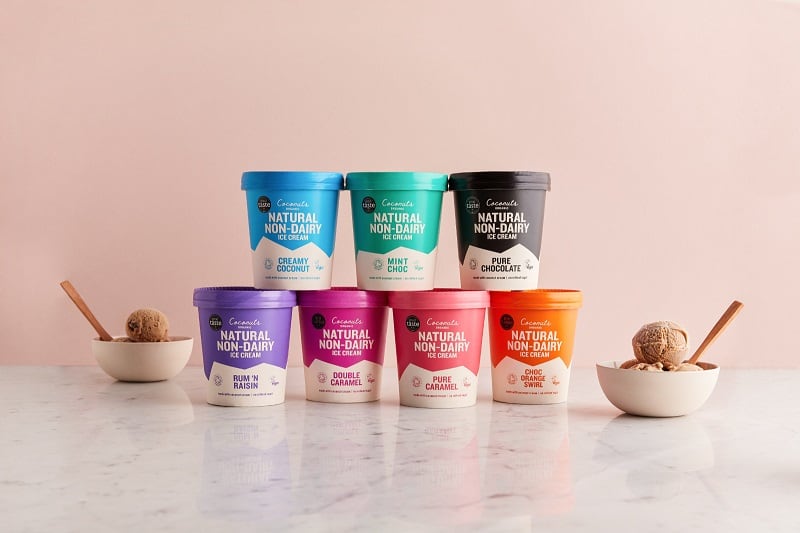The growth in sales is currently double the increase in value experienced in the previous 12-week period to 22 March, revealing frozen food is becoming increasingly popular with shoppers.
Frozen sales increased in value by 19.4% and volume was up 17.5% in the period from the end of March to 14 June. In the previous 12-week period the value growth was 9.7% and volume 9.3%
The recent 12-week data also revealed frozen outperformed the total grocery market as well as fresh and chilled food sales in both value and volume.
The surge in sales follows a trend first reported by BFFF in April, when data revealed that in the four weeks from 23 February to 22 March British shoppers spent an extra £131 million on everything, from ice cream to frozen meat and poultry, as they filled up their freezers before the lockdown began on 23 March.
The Kantar figures also revealed that long-term frozen sales are increasing. Data covering the 52 weeks from 16 June 2019 to 14 June 2020 showed that sales of frozen food reached £6.7bn, an increase in value of 6.1%, and that volume grew to 5.4%. In comparison sales of fresh and chilled food increased in value by 5%.
The Kantar figures revealed six out of nine categories of frozen food have seen a sales and volume increase over the last year, with frozen veg up 9.4% in volume and frozen pizza up 9.5% in volume. Ice cream and frozen fish sales also performed impressively, up in value by 8.9% and 8.8% respectively. Only confectionery, meat and poultry, and frozen ready meals saw small declines over 52 weeks.
Richard Harrow, BFFF chief executive said: “We now know more consumers than ever have been shopping in the frozen aisle since mid-March. This is hardly surprising, given the long shelf-life, reduced food waste, value for money and variety of food on offer there.”
These findings are supported by recently released research commissioned by BFFF members Iceland and Birds Eye, that suggests the frozen revival is here to stay. The study shows ‘value for money’ is just one of the reasons people will continue to fill their freezers post-coronavirus.
The study included insights into how buying habits have changed, with Generation Z driving sales through a newly-discovered appreciation of the benefits of frozen.
More than a quarter (26%) of 18-24-year-olds are buying more frozen equivalents of their regular fresh items while 40% have been stocking up on healthy frozen options including frozen vegetables, fruit, meat and fish. Almost a third (31%) are trying new frozen foods such as meat substitutes, claimed the report.
Harrow added: “Individual retailers have reported a huge surge in frozen sales during lockdown. What’s really encouraging is that quality and innovation is attracting new younger consumers to the category as well as exciting our traditional shoppers.”
Frozen food revamp
Illustrating this trend is Birds Eye’s (known as Iglo in other parts of Europe) move to replace its famous Captain Birdseye mascot with a woman for the first time in its 50-history.
The character first appeared on the frozen food brand’s packaging in 1967 and has been played by a series of men. Charlotte Carter-Dunn, a 24-year old real-life shopper was chosen from 500 entrants to find a temporary new captain. She will appear on thousands of packs of Birds Eye Fish Fingers in Iceland stores across the UK from July 2020.
Iceland and Birds Eye, two leading brands in frozen food, launched the competition together to promote the benefits of frozen food and help everyday families make their money go further. New research commissioned by the two frozen food giants recently revealed the extent of food waste in the UK, with over £188 million wasted nationwide every week.
Steve Challouma, UK General Manager at Birds Eye, said: “We’re excited to be temporarily replacing our iconic Captain with Charlotte, who is a real champion of the benefits of using your freezer more. Frozen food has never been more relevant and important to the average household.”
He added that that product re-design would inspire more consumers to “discover the real variety of exciting food options that sit in the freezer aisle.”
He added: “We are seeing lots of shoppers visiting our website for information on how to defrost, how long to keep frozen food and to find out if they can refreeze food that’s been defrosted. There are also plenty of people seeking inspiration from the recipe section. This all points to ongoing success for the frozen sector.
“Now that many more consumers have discovered the benefits of frozen food, further innovation and creativity will ensure frozen continues to be a key part of their shopping repertoire.”
Different categories are driving growth in Europe
More market research - the IRI Demand Index and IRI Inflation Tracker, which has complied weekly data in the wake of COVID-19 from consumers in the UK, France, Italy, the Netherlands and Germany – shed further light on frozen food trends.
Frozen food is the winner across all countries, according to the data, but the growth drivers for this macro category vary according to countries. In the UK, where it has increased since the beginning of the COVID-19 crisis, ice creams and desserts and frozen fish categories are leading the growth. In the Netherlands, vegetables, desserts and juices and potato products are the drivers. In Italy, the growth of frozen food is not impacted by the decrease in demand in the ice creams category.




